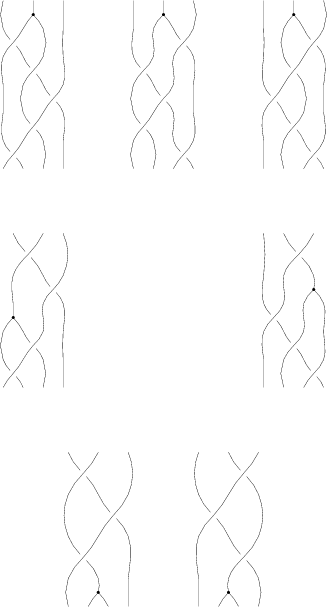06-1350/Syzygies in Asymptote in Brief: Difference between revisions
From Drorbn
Jump to navigationJump to search
(For Handout.) |
m (→Installation) |
||
| Line 1: | Line 1: | ||
===Installation=== |
===Installation=== |
||
See [[Syzygies in Asymptote]] for more detailed information. |
See [[06-1350/Syzygies in Asymptote]] for more detailed information. |
||
First install [http://asymptote.sourceforge.net Asymptote]. Once installed, download [http://www.math.utoronto.ca/~andy/syzygy.asy syzygy.asy]. |
First install [http://asymptote.sourceforge.net Asymptote]. Once installed, download [http://www.math.utoronto.ca/~andy/syzygy.asy syzygy.asy]. |
||
Revision as of 18:37, 4 December 2006
Installation
See 06-1350/Syzygies in Asymptote for more detailed information.
First install Asymptote. Once installed, download syzygy.asy.
Braids
import syzygy; // Accesses the syzygy module.
Braid b; // Start a new braid.
b.n=3; // The braid has three strands.
// The strands are numbered left to right starting at 0.
b.add(bp,0); // Add a overcrossing component starting at strand 0,
// the leftmost strand.
b.add(bm,1); // Add an undercrossing starting at strand 1.
b.add(phi,0); // Add a trivalent vertex that merges strands 0 and 1.
// Strand 2 is now renumbered as strand 1.
b.draw(); // Draw the resulting braid.
Relations
import syzygy; // Access the syzygy module. Braid l; // Define the left hand side of the relation. l.n=3; l.add(bp,0); l.add(bp,1); l.add(bp,0); Braid r; // Define the right hand side of the relation. r.n=3; r.add(bp,1); r.add(bp,0); r.add(bp,1); Relation r3; // Define a relation. r3.lsym="\rho_3"; // Give the relation a name for when it is written in functional form. r3.codename="rho3"; // Give the relation a name to be used by Mathematica. r3.lhs=l; r3.rhs=r; r3.draw();
r3.toFormula() produces the formula:
r3.toLinear() produces the formula in linear form:
and r3.toCode() produces a version usable in Mathematica:
rho3[x1_, x2_, x3_, x4_] :> bp[x1, x2, x3] + bp[x1 + x3, x2, x4] + bp[x1, x3, x4]
- bp[x1 + x2, x3, x4] - bp[x1, x2, x4] - bp[x1 + x4, x2, x3]
Syzygies
import syzygy; // Phi around B Braid initial; initial.n=4; initial.add(bp,2); initial.add(bp,0); initial.add(bp,1); initial.add(bp,0); initial.add(bp,2); initial.add(phi,1); Syzygy pb; pb.lsym="\Phi B"; pb.codename="PhiAroundB"; pb.initial=initial; pb.apply(r3,1,0); pb.apply(r4a,3,1); pb.swap(2,3); pb.apply(r4b,0,1); pb.apply(-r3,1,0); pb.apply(-r4a,0,0); pb.swap(2,3); pb.apply(-r4b,3,0); pb.apply(r3,1,1); pb.draw();
Again, like relations, we can use pb.toLinear()
and pb.toCode()
PhiAroundB[x1_, x2_, x3_, x4_, x5_] :> rho3[x1, x2, x3, x5] + rho4a[x1 + x5, x2, x3, x4] + rho4b[x1 + x2, x3, x4, x5] - rho3[x1, x2, x3 + x4, x5] - rho4a[x1, x2, x3, x4] - rho4b[x1, x3, x4, x5] + rho3[x1 + x3, x2, x4, x5]
to produce formulas.







